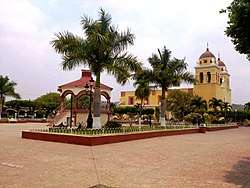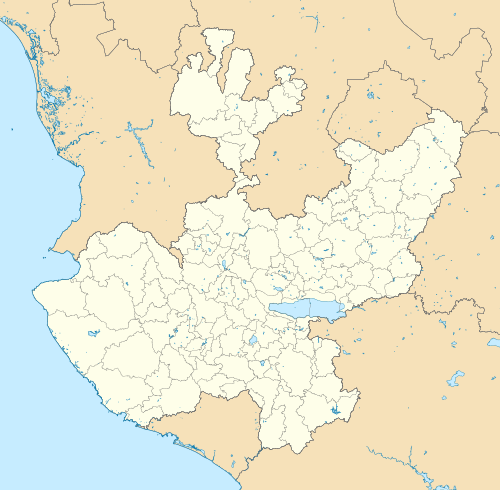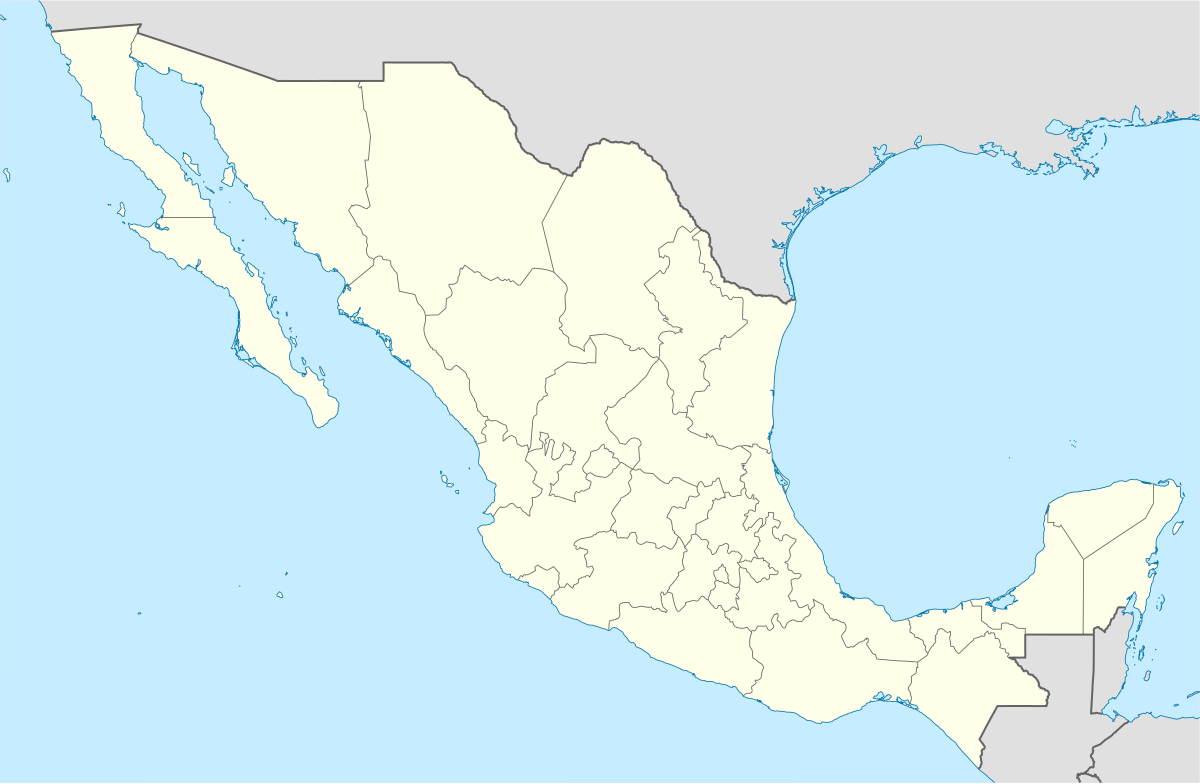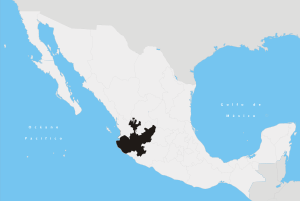Villa Purificación
Villa Purificación is a town and municipality, in Jalisco in central-western Mexico. The municipality covers an area of 1937.61 km².
Villa Purificación | |
|---|---|
Municipality and city | |
 Main plaza | |
 Villa Purificación Location in Mexico  Villa Purificación Villa Purificación (Mexico) | |
| Coordinates: 19°34′N 104°23′W | |
| Country | |
| State | Jalisco |
| Area | |
| • Total | 1,937.61 km2 (748.12 sq mi) |
| Population (2005) | |
| • Total | 10,975 |
| Time zone | UTC-6 (Central Standard Time) |
| • Summer (DST) | UTC-5 (Central Daylight Time) |
As of 2005, the municipality had a total population of 10,975.[1]
History and tourism
In 1532 Nuño Beltrán de Guzmán sent Captain Juan Fernández de Híjar to the province of El Tuito and crowned them to look for a place in order to found a villa. In this virtue, Fernández de Híjar with 25 soldiers marched south and founded on February 2, 1533 the Villa of Purification in the valley of Tecomatlán and also established the first chapel in the now state of Jalisco. Upon the arrival of the Spaniards, Purification belongs to a small province populated by Indians from Saulam, or Sayula, formed by the villages of Tenzitlán, Xirosto, Jew, Pampochin, Amborí, La Silla, Cuxmalán, Carrion and Melahuacan as the headboard. The conquest of this region is due to Francisco Cortés de San Buenaventura, in 1525, remaining within the province. Tourist and Cultural Attractions:
Historical Monuments
The Parish of the Candelaria.
Parties
The Candelaria festival, from January 24 to February 2. The bullfighting party is held for ten days from Easter Sunday.
Music
Mariachi.
Crafts
Huaraches, wooden furniture, saddles and pottery are manufactured.
Gastronomy
Jackals, prawns, birria, pozole, tamales, often and mole; sweets made with milk; tequila and raicillla
Touristic centres
You can admire the Parroquia de la Candelaria and the petroglyphs in Chacala; and the natural heritage formed by the forests located in the northern, southern and eastern part of the municipality; the Sierra de la Silleta and the Cacoma Center.
References
- "Villa Purificación". Enciclopedia de los Municipios de México. Instituto Nacional para el Federalismo y el Desarrollo Municipal. Retrieved April 20, 2009.
